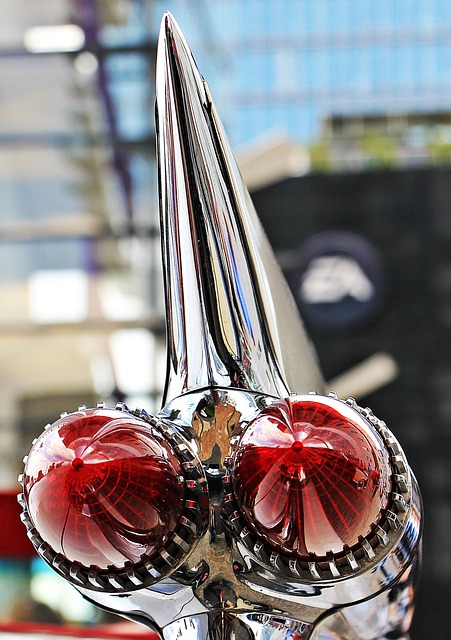Looking to register your car in California? This comprehensive guide breaks down the process step-by-step. From understanding the requirements for car registration in the Golden State to handling additional steps post-registration, you’ll learn everything needed to navigate the DMV VIN verification process smoothly. Ensure a seamless experience by gathering the necessary documents, preparing your vehicle, and visiting a California DMV office.
- Understand the Requirements for Car Registration in California
- Gather Necessary Documents for DMV VIN Verification
- Prepare Your Vehicle for Inspection
- Visit a California DMV Office and Complete the Registration Process
- Handle Additional Steps After Successful Registration
Understand the Requirements for Car Registration in California

Before registering your car in California, it’s crucial to understand the requirements set by the Department of Motor Vehicles (DMV). One key step is ensuring your vehicle meets all safety and emission standards through a comprehensive DMV VIN verification process. This involves checking the vehicle identification number (VIN) to ensure its authenticity and history, which can be efficiently handled through a mobile VIN inspection or a professional vin inspection service.
Additionally, you’ll need to gather essential documents, such as proof of ownership, valid insurance, and current registration from your previous state (if applicable). A mobile VIN verifier can assist in streamlining this process by providing on-site verification services, making it easier for you to meet the California car registration requirements promptly.
Gather Necessary Documents for DMV VIN Verification

To register your car in California, preparing for the DMV VIN verification process is crucial. First, gather all essential documents related to your vehicle. This typically includes your car’s registration certificate from the previous state, a valid driver’s license, proof of insurance, and the purchase agreement or sales receipt. Additionally, you’ll need the Vehicle Identification Number (VIN) inspection report, which can be obtained through a mobile vin verifier or by scheduling an appointment at a DMV field office for a formal vin inspection.
Make sure these documents are organized and readily accessible to streamline the registration process. A mobile vin verification service can simplify matters by providing on-demand inspections, eliminating the need for an in-person visit. This approach not only saves time but also ensures that your car’s information is accurately verified before proceeding with California’s registration requirements.
Prepare Your Vehicle for Inspection

Before you register your car in California, it’s crucial to prepare your vehicle for the DMV’s VIN (Vehicle Identification Number) verification process. This involves ensuring that all required documents are up-to-date and accurate, including proof of insurance and registration from your previous state of residence. Additionally, it’s essential that your vehicle passes a safety inspection, which checks critical components like brakes, lights, tires, and exhaust systems. A well-maintained vehicle will streamline the registration process.
For convenience, many California residents opt for mobile VIN verification services, also known as mobile VIN inspections or mobile VIN checkers. These services allow you to complete the initial verification process from the comfort of your home or workplace. Using a mobile VIN verifier, such as those offered by some insurance companies or specialized apps, can save time and effort compared to traditional methods. This modern approach aligns with California’s digital efforts to simplify vehicle registration procedures.
Visit a California DMV Office and Complete the Registration Process

After gathering all your necessary documents, it’s time to visit a California DMV office to complete the registration process. The first step is to undergo a DMV VIN verification, which ensures that your vehicle’s unique identifier matches the information on record. This can usually be done quickly and efficiently, as the staff at these offices are trained to handle these verifications promptly.
During your visit, you’ll need to present valid identification, proof of insurance, and any applicable fees. The process involves filling out registration forms and providing detailed information about your vehicle, including its make, model, year, and color. In some cases, a mobile VIN inspection or mobile VIN verification service may be available, offering convenience for those who prefer not to visit a physical office.
Handle Additional Steps After Successful Registration

After successfully registering your car with the California DMV, there are a few additional steps to handle. One crucial step is to ensure proper vehicle identification number (VIN) verification. This process involves cross-referencing your car’s VIN with the DMV’s records to confirm its authenticity and history. You can accomplish this through various means, including using a mobile vin verifier or conducting a vin inspection yourself.
A mobile vin verifier offers convenience by allowing you to complete the verification process on-site during registration. Alternatively, a vin inspection can be done manually by cross-referencing the VIN with online databases or official records. Regardless of your chosen method, ensuring accurate and up-to-date information is key to maintaining compliance with California’s vehicle registration requirements.
Registering a car in California involves understanding specific requirements, gathering essential documents for DMV VIN verification, preparing your vehicle for inspection, and visiting a local DMV office. Once registered, ensure you handle any additional steps, like updating insurance and license plate placement, to enjoy a smooth driving experience. Remember, proper registration is crucial for road safety and legal compliance.
